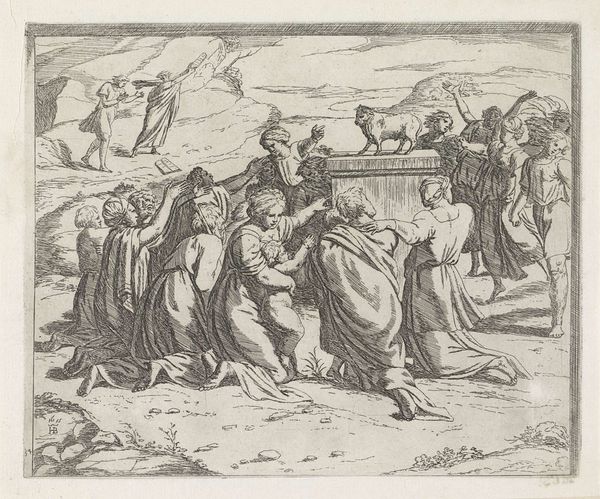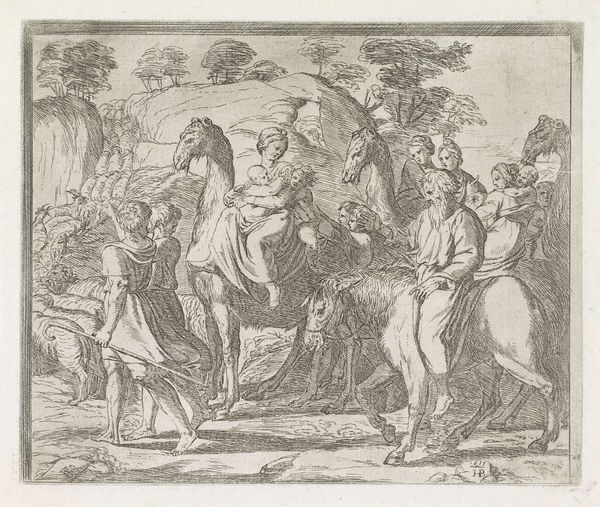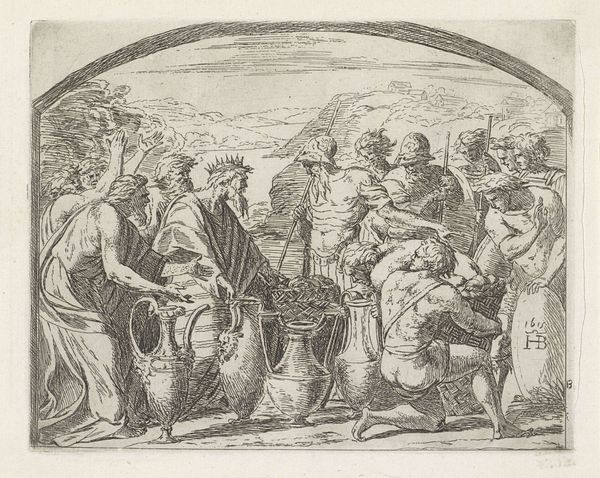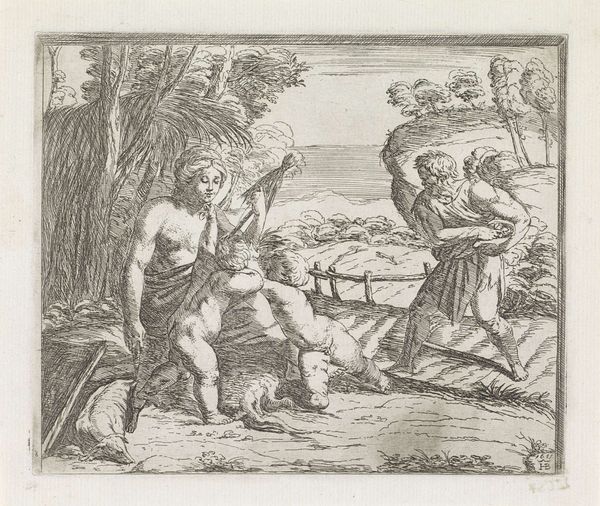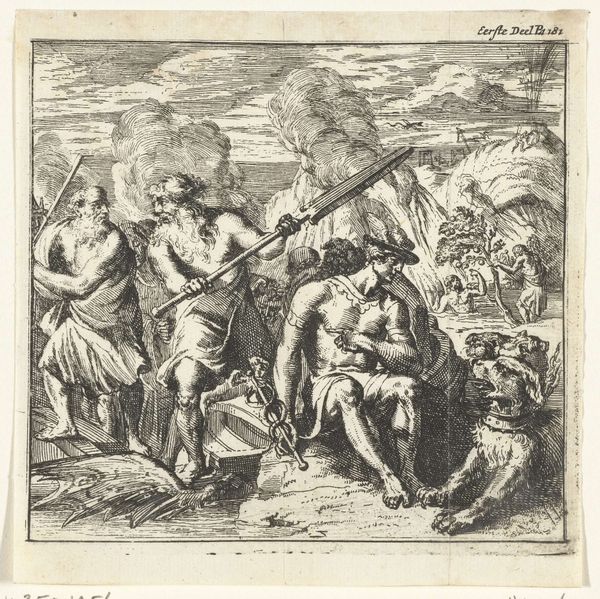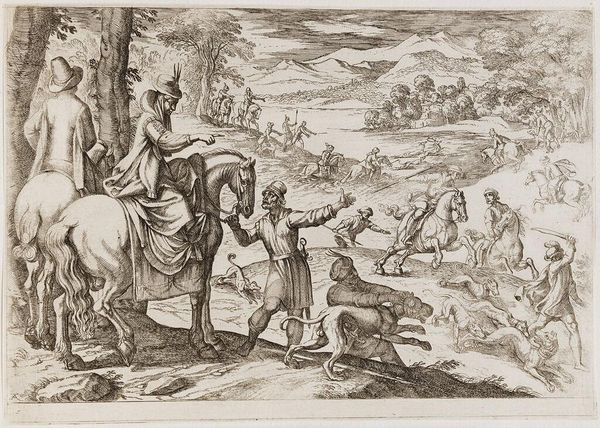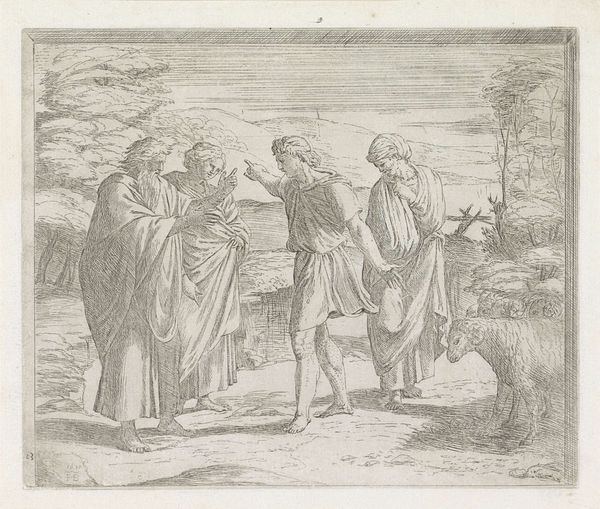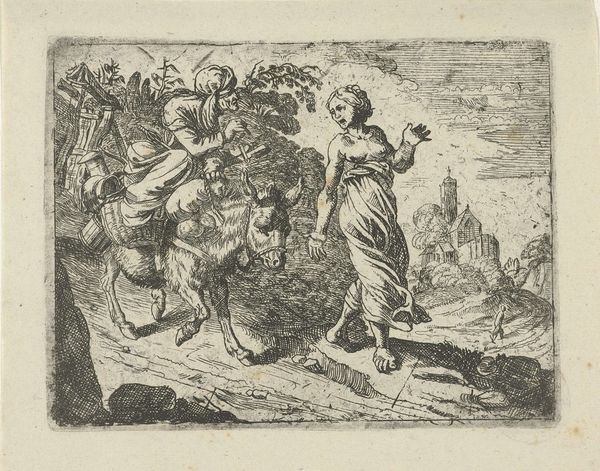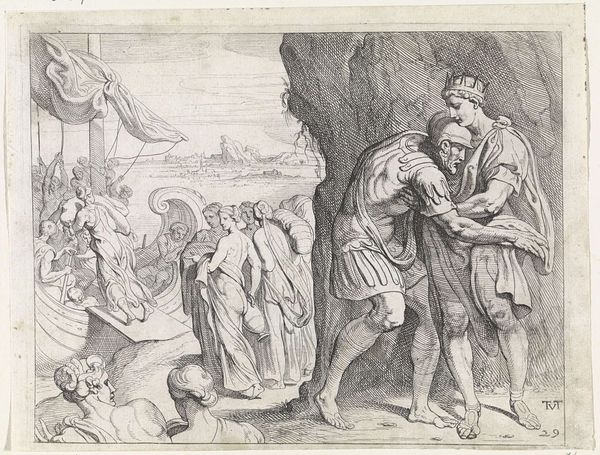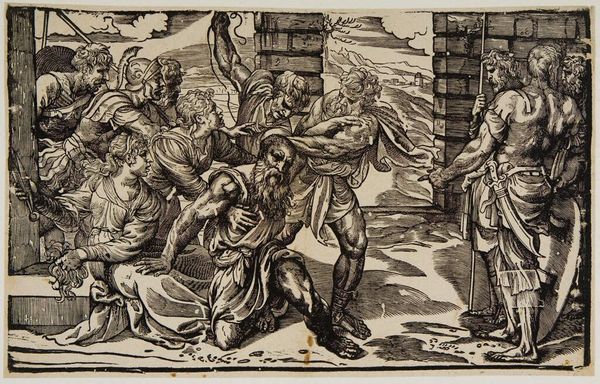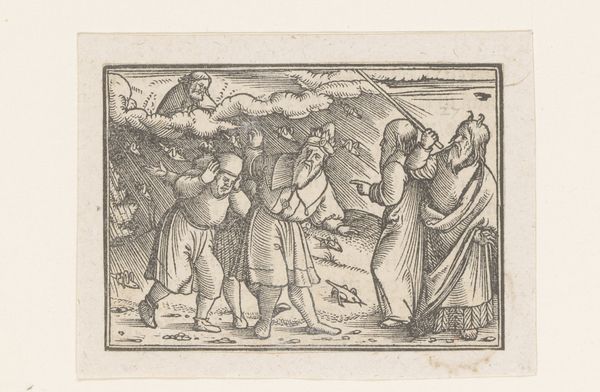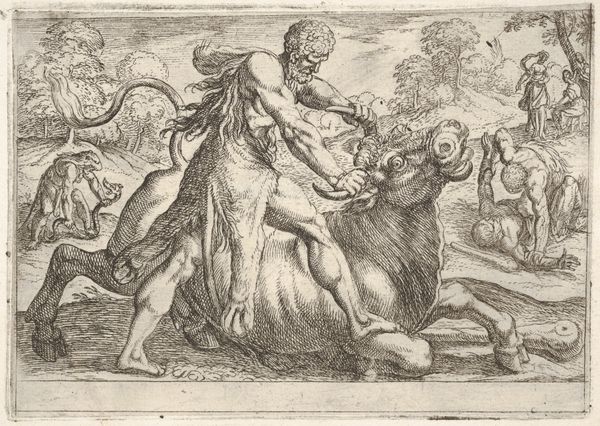
print, engraving
#
narrative-art
#
baroque
# print
#
landscape
#
figuration
#
line
#
history-painting
#
engraving
Dimensions: height 148 mm, width 179 mm
Copyright: Rijks Museum: Open Domain
Curator: Orazio Borgianni created this engraving, "Lot verlaat Sodom met zijn vrouw en dochters" or “Lot leaving Sodom with his wife and daughters”, around 1615. You can find it here at the Rijksmuseum. Editor: My first impression is one of melancholy underscored by impending disaster; a bleak but urgent narrative, caught in this black and white print. Curator: Indeed. Borgianni captures the moment of divine wrath, the exodus dictated by the biblical story of Sodom and Gomorrah, but through the lens of early Baroque sensibilities, highlighting not just the drama but also the internal struggles. Consider how the poses, despite the scene's urgency, remain graceful. What social politics do you think are reflected through Lot, his daughters and his wife? Editor: Absolutely, Lot, representing patriarchal authority, leads his daughters from danger. I think Lot’s wife and daughters are portrayed with such different affectations, it's an incredibly complex statement of identity and power dynamics during a pivotal moment. Borgianni illustrates her downfall—of her literal turning—as inextricably linked to an unwillingness to part with a lifestyle that perhaps defined who she was. This refusal has very much contemporary interpretations, not merely divine disobedience, wouldn’t you agree? Curator: Certainly. Borgianni, though working within a religious framework, reflects upon societal issues through their poses, their clothes, the city walls. This piece invites considerations around exile, identity, and the cost of progress, but within the confines of its artistic and social era. Think of the public function and message within Counter-Reformation values. Editor: Right. Seeing it now, the image acts almost as a didactic symbol and propaganda; it is far more complex in meaning and symbolism than first impressions let on. Curator: It speaks to how art's reception transforms over time, shifting our understanding of power dynamics within it. We can re-evaluate historical narratives through art, examining figures like Lot's wife with a contemporary feminist lens, analyzing resistance to imposed moral codes and the act of looking back. Editor: Exactly, seeing beyond the initial visual impression opens up a fascinating space to reconsider what the image represented then and its diverse meanings for different viewers now.
Comments
No comments
Be the first to comment and join the conversation on the ultimate creative platform.
